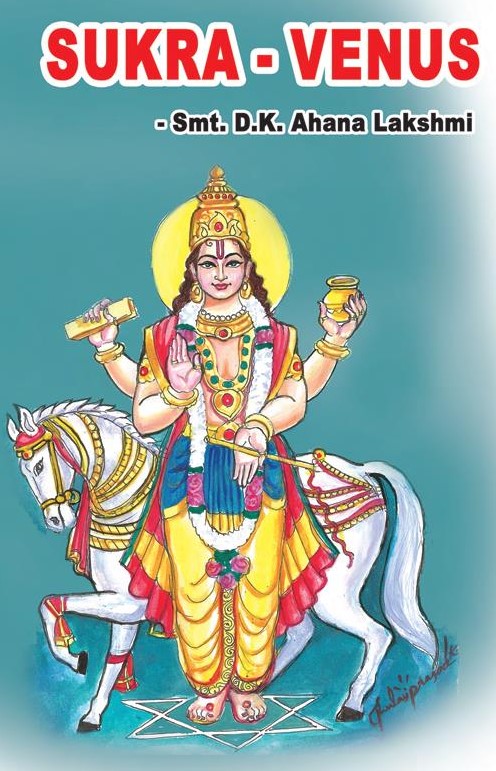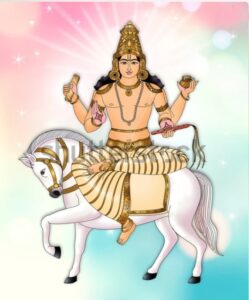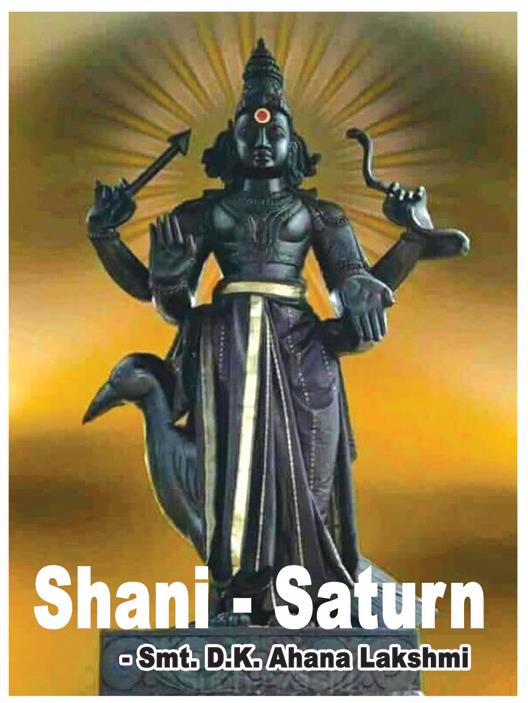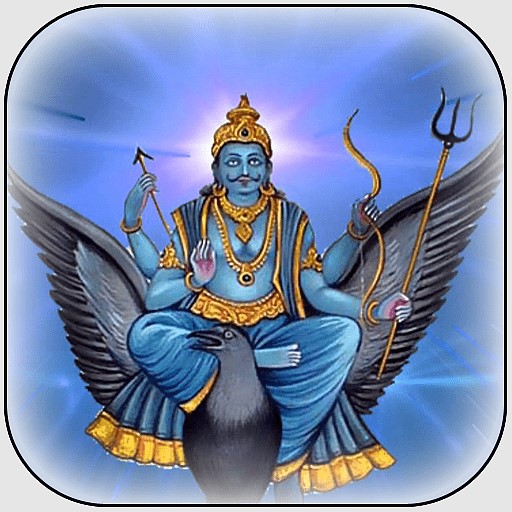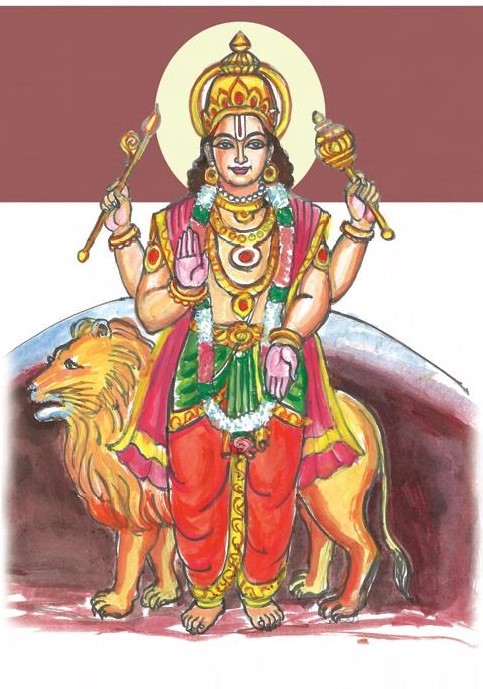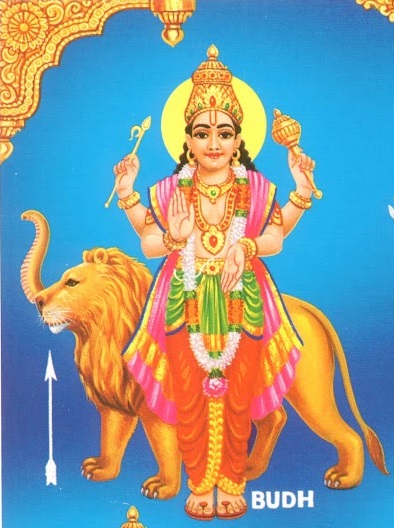Suryascandro mangalasca budhascapi brahaspati
Sukrahsaniscaro rahuh ketusceti navagrahah ||
Navagraha – Celestial influencers
Sun, Moon, Mars (Mangala), Mercury (Budha), Jupiter, Sukra (Venus), Saturn (Shani), Rahu, and Ketu are the nine planets.
When you are in a remote village and look at the sky at night without the light pollution of the cities, you become aware of the shining stars (and may even recognize the zodiac formations) in the Milky Way overhead. At certain times of the year, you become very aware of certain glowing bodies and feel that they are reaching out to you.
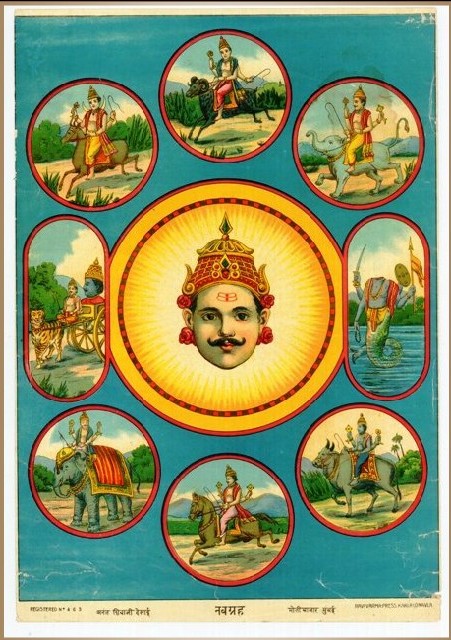
Our ancients counted five of these that were very visible to even the naked eye along with the sun and moon and the two shadow planets, rahu and ketu, as the nava grahas or nine planets. The planetary positions at the time of a child’s birth are believed to influence the child’s destiny.
Thus, the Navagrahas may be considered celestial influencers. It was believed that living beings pass through the periods and positions of these nine and hence, the hardships in life were linked to the position of the grahas. Remedial measures or pariharas to overcome any adverse effects due to the planets were also suggested.
It is not surprising therefore that the worship of these nine celestials has prevailed through the ages with stories about them appearing in various Puranas.
Why! Even the seven days of the week are named after them! Thus we have
- Ravivaram (Ravi = Sun),
- Somavaram (Soma=Moon),
- Mangalvaram (Mangal=Mars),
- Budhavaram (Budha=Mercury),
- Brihaspativaram or Guruvaram (Brihaspati/ Guru= Jupiter),
- Sukravaram (Sukra=Venus) and
- Shanivaram (Shani=Saturn).
Worship of the navagrahas is pan-Indian though the way of worship may be different. In many places, they are carved on the roof of many temples. Temples dedicated to Navagrahas are few. Around Tamil Nadu’s Kumbakonam, there are nine temples, each dedicated to one of the nine grahas, and hence they are collectively known as the Navagraha temples.
On the other hand, in many Shiva temples in south India, especially in Tamil Nadu, there is a shrine exclusively dedicated to the navagraha, usually to the northeast of the sanctum. The nine celestial influencers are usually placed on a square pedestal, about three feet off the ground. Surya, the sun, takes the central position, facing east, and the other eight deities are placed around Surya with no two facing each other.
Each graha faces one of the four directions, the specific direction being defined by the pratishta (e.g. Agama or Vaidika) followed by the temple. In general, the navagrahas are to be worshipped after worshipping the main deity.
No wonder Purandaradasa sang ‘Sakala Graha Bala Neene Sarasijaaksha’- O lotus-eyed, you wield power over all the planets You pervade the universe as its protector You are the sun, moon, mercury; you are Rahu, ketu You are Venus, Jupiter, Saturn, and Mars.
Navagraha Homam
is performed to strengthen beneficial grahas and pacify maleficent grahas for the removal of obstacles from one’s personal or even professional life. The nine planets are invoked by chanting the navagraha stotram and shanti mantras and offering nine types of grain, vastra, and naivedya.
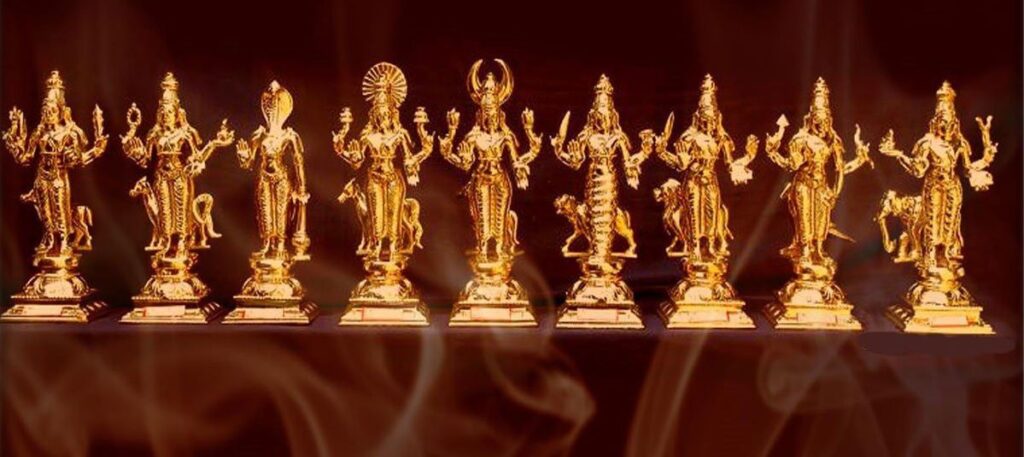
Mangala – Mars
Angaraka means the red-hued in Sanskrit and refers to the planet Mars. We call the day Mangalavaaram (Tuesday), after Mangala, the auspicious one, which is another name for Mars.
In Indian mythology, Mangala is portrayed as red in colour and war-like as can be seen by the mace and spear he holds. He is also depicted showing the abhaya mudra and the varada mudra.
The origin of Mars varies depending on the different mythological texts – some say he is the son of Bhoomi devi and Lord Vishnu, when he brought her up from the depths of the ocean in Varahaavatara. Others say he was born when a drop of sweat from Lord Shiva’s brow fell on the earth.
Either way, he is the son of Bhoomi, hence also known as Bhauma. Mangal’s vahana is a ram. This deity is believed to have an astrological influence on skills of hands, handling of equipment; even anger and strength: the way one uses energy at different levels, including mentally, to analyse situations.
Muthuswami Dikshitar’s kriti in Suruti ragam extols Angaraka – I take refuge in Angaraka, the Mandara tree for humble devotees.
Vaitheeswarankoil Temple
The presiding deity of Tuesday and the son of earth, Bhumikumara. Dikshitar says that he is friendly with the sun, moon and Jupiter; he also promotes brotherhood (bhratrukarakam). And, deenarakshaka pujitam vaidyanatha kshetram, this deity is worshipped in ‘Vaitheeswarankoil‘.
One of the navagraha temples, Vaitheeswarankoil is about 110 km from Thanjavur and 50km from Kumbakonam in Tamil Nadu. Here, Lord Shiva is worshipped as Vaitheeswaran, the God of Healing, who cured Angaraka of his affliction.
Mangalnath temple
Another famous temple associated with Mangal is the Mangalnath temple overlooking the Kshipra River in Ujjain. According to the Matsya Purana, this is believed to be the birthplace of Mars.
Let us pray to the Mangala graha to keep us success
Dharanigarbha sambhutam
vidyutkaanti samaprabham
kumaram saktihastam
tammangalam pranamaamyaham
Born of earth, with lightning-like brilliance Young man spear in hand, auspicious one, I pray to thee.
Click here to learn more about Mangala (Wikipedia)
Data Source – Article posted by Smt. D.K. Ahana Lakshmi in Sapthagiri Magazine.
